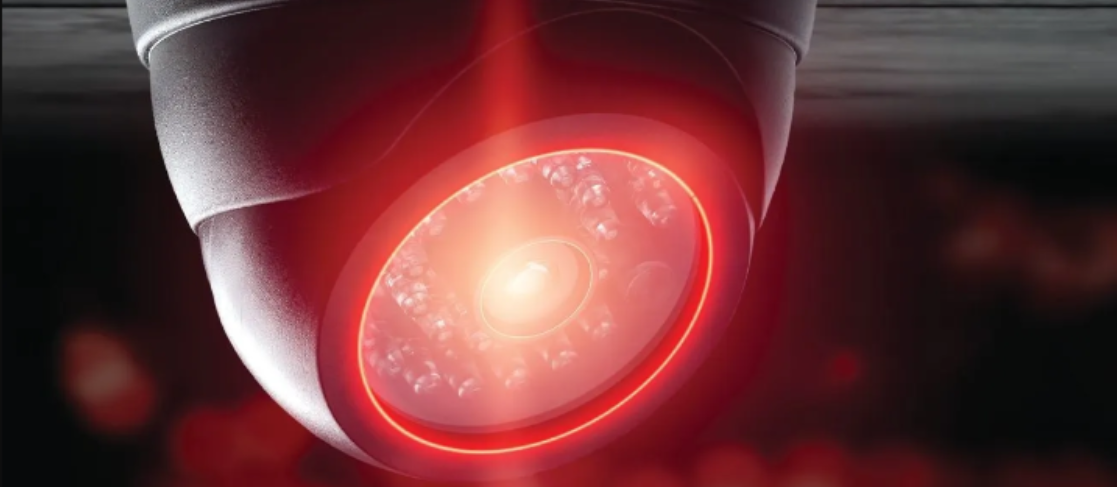Fire Sprinkler System Corrosion
The unseen risk to buildings

What happens inside fire sprinkler pipes while they lie dormant? Corrosion continuously degrades sprinkler piping. If the risks posed by corrosion are not addressed proactively, the building and the business inside are exposed to catastrophe.
In one satellite manufacturing facility, the issues began modestly. One day, the plant manager arrived at the building to discover a leak above one of the assembly halls. The facility manager thought, "No problem. A fire sprinkler contractor can patch this in a few hours; then the problem is solved." A few weeks passed with no new developments, and the issue faded into the background. Then, another leak developed over one of the clean rooms, creating more complicated and costly cleanup and repair. The team starts to worry. Over the following months, the number of leaks grows. What began as a series of isolated leaks in the fire sprinkler system became an ever-present, extremely costly and damaging issue.
The problem became so severe that management directed desperate measures. Tarps now cover more than hundreds of millions of dollars of finished product before it is sealed for delivery, and certain control valves have been shut off to prevent leaks above the clean spaces from causing more damage. Half of the building is without fire protection; worse yet, the leadership team is increasing the pressure to solve this problem.
The problem of corrosion
Corrosion in fire sprinkler systems is often an overlooked source of risk and expense until it is too late and the FM team is forced to take drastic action. Many of the risks posed by corrosion are most impactful before external problems like leaks develop.
Corrosion is a pervasive problem in fire sprinkler systems, and unless active steps are taken to prevent it, corrosion is causing damage right now. Although codes governing sprinkler systems require condition checks on a semi-regular basis, code compliance does not equate to risk mitigation because the code standards are not designed to expose the risk posed by corrosion. For example, FM teams ensure five-year inspections are conducted on their sprinkler systems. Although these inspections inspect the sprinkler pipes' internal condition, they do not prescribe looking at the locations where corrosion is most likely to occur. While all buildings are different there are some common risk factors prevalent in all buildings.
Fire risk
The most obvious and devastating risk caused by a degrading sprinkler system is the risk of an uncontrolled fire. Corrosion decreases the sprinkler system’s ability to respond to a fire in two ways.
First, corrosion creates iron deposits that build up on the pipe's interior. Corrosion deposits will reduce the pipe’s ability to deliver water, and in some cases, deposits will completely block sprinkler heads or entire sections of the sprinkler system. This means that in a fire, when a sprinkler system is needed most, corrosion will prevent it from operating effectively and ultimately from controlling the fire.
Second, because leaks caused by corrosion are so disruptive to building operations, in many cases the building operator elects to remove water pressure from the system before the leak is repaired. Sometimes, this means the system is out of service for a few hours until a service technician arrives; but other times, the system remains out of service for longer. The risk caused by a system that is out of service is critical because fire protection is completely removed from a particular part of the building. A 2021 report published by the National Fire Protection Association highlights that in cases where a sprinkler system failed to control a fire, the sprinkler system was shut off in 57 percent of cases. For fire protection systems, uptime is critical.
Operational risk
Most facilities' overarching purpose is to house a business' operations. Facilities are not maintained for the sake of having a facility; instead, they are maintained so something can happen inside. Consider the impact that emergency maintenance of a fire sprinkler system can have on a business’ operations. Corrosion creates leaks that spray water on operating equipment, damage goods in inventory and impact the FM team’s ability to provide a safe and clean place to do business.
The direct financial impact of fixing a leak is often well understood but consider the financial cost of unplanned downtime caused by a leak. As an example, a large California casino was impacted by unplanned downtime. They sustained a leak over a slot machine area, and although the cost to fix this leak was material, the lost revenue-generating potential of the slot machines was more impactful. In this case, the lost revenue was calculated in tens of thousands of dollars per hour, so the total loss contributed to this single piping leak was painful to the FM team and the casino leadership.
FM teams can spend their valuable time and money in more productive ways than managing emergency maintenance. Proactive maintenance is preferred in every case where it is feasible. Consider what resources are required to handle an emergency leak that happens overnight: the repair cost, time coordinating contractors, water cleanup, coordinating a fire watch team and much more. The FM team’s resources should be used more efficiently.
Business risk
The problem of corrosion goes beyond the scope of the FM team because the risks affect every part of a business. FMs must convince leadership and financial teams that proactive efforts are necessary. Business risks can be sorted into financial risks and risks to a business’ strategic plan. The following questions illustrate how impactful corrosion can be to a business. Consider the answer to each question in either of the following cases: corrosion prevents a sprinkler system from operating in a fire and a building burns down, or corrosion has progressed to the point where large-scale remediation effort is needed on short notice, potentially to keep a building’s occupancy permit active.
Impact to Strategic Plan:
- Where will business be conducted if the building is not occupiable? Is the business model still viable?
- How will this scenario impact growth plans?
- Will capital need to be allocated to fixing the sprinkler system instead of another strategic investment like sustainability?
- What is the opportunity cost of the FM team managing a remediation project over other, more strategic projects?
Financial:
- How will insurance premiums change if a claim is made against damage caused by the fire sprinkler system?
- What will this scenario do to production/income? How will money be made while the building is not operating?
- How will a large remediation project be funded?
- Will cash be available?
- Will the current lending environment impact financing options?
- Will capital be reallocated from other investments?
- Will financial targets be met if funding is needed for this project?
- Even if insurance covers fire or water damage, will enough cash be available to fund an interim solution while waiting for insurance proceeds?
So, what can be done?
Understanding the impact of corrosion risk is crucial; however, it is critical to understand what options are available. It is possible to do nothing, live with the risks and understand that eventually, corrosion will damage the system enough that action needs to be taken. In industry parlance, this is called the break/fix approach. One problem with this approach is that nothing is done to address the risks that are present even before outward signs such as leaks begin to develop. And because regular maintenance and draining of a sprinkler system causes corrosion and leaks to accelerate, the FM team will eventually be forced to take drastic, expensive action.
If remediation is being considered, the standard industry approach is to perform a complete system replacement. The benefit of this approach is that a new system will be free of damage, but the downsides are staggering. First, a complete system replacement is extremely expensive. Costs vary depending on building characteristics, but as an example, replacing a sprinkler system in a 200,000 square-foot industrial space can cost more than US$2 million. Costs increase when access to the pipe is limited, when design work is required and many other factors.
Beyond the cost, replacing an entire sprinkler system in a live building is highly disruptive. Sometimes, piping is easily accessible from the floor, but many modern buildings hide sprinkler pipes behind permanent or semi-permanent barriers. What activities would be required from an FM team if a total system replacement project started tomorrow? Can something like this be supported with existing resources?
Most importantly, only performing total system replacement guarantees that corrosion will continue unchecked and that remediation will be required again. Without understanding what drives corrosion and without taking proactive measures to prevent corrosion, it will continue to damage the system in the same way that it did before.
Fortunately, there is an alternative option. If leaks are occurring, total system replacement is not required. Because corrosion in sprinkler systems is localized, a highly targeted and selective remediation plan can be used to eliminate future leak risk. When the right data is used and the right strategy is employed, remediation costs can be reduced by 75 percent or more compared to total system replacement.
Where no immediate outward signs of corrosion are present, action can be taken to ensure the worst-case scenario is avoided. With the right tools and a willingness to act, FM teams can proactively manage the condition of a fire sprinkler system. Portfolio owners can triage risk levels throughout a portfolio to ensure the budget is spent most efficiently.
Resiliency
In today’s dynamic world, resiliency is critical to staying competitive. A striking amount of time and energy is put into risk-proofing businesses from external factors, and life cycle costs for many building assets are actively managed. Still, corrosion in fire sprinkler systems is a significant risk factor that is often overlooked. Proactive inspection that is beyond the code minimum can determine risk throughout a portfolio. Corrective action can be planned, forecasted and included in a phased capital budget. Disruptions can be avoided so that the business’ strategic plan can be executed. Working with a corrosion expert will ensure the proper steps toward a more resilient business are taken.

Mathias Young is the consulting group manager at Engineered Corrosion Solutions (ECS), leading the organization’s professional service activities. Young’s team has an excellent track record working with building owners to help reduce their risk and liability caused by corrosion. Before joining ECS’s professional services business, he played a key role in the product development and OEM account teams. Young earned a degree in mechanical engineering from the Missouri University of Science and Technology.
Read more on Operations & Maintenance , Real Estate and Risk Management
Explore All FMJ Topics









